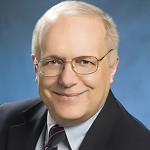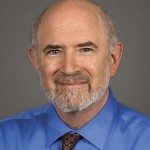6000+ Statisticians Expected in Seattle This August
The Imposteriors to Play at JSM Dance Party
With more than 3,000 presentations arranged into 183 invited sessions, 400 contributed sessions, and 400 individual poster and speed presentations, the 2015 Joint Statistical Meetings (JSM) will be one of the largest statistical events in the world.
In addition to the 45 parallel sessions taking place during most of the meetings, there are the other activities you can add to your program—Professional Development courses and workshops, roundtable discussions, and the Career Service.
This year, we’ll have the Opening Mixer in the exhibit hall and live music at the dance party. You’ll also want to tour Seattle. In short, we expect you to be very busy … and to not mind it at all.
Here is the list of featured speakers. We hope to see you there!
Featured Speakers
ASA President’s Invited Address
Christine H. FoxAssistant Director, Policy and Analysis, Johns Hopkins University Applied Physics Laboratory.
The Role of Analysis in Supporting Strategic Decisions
August 10, 4:00 p.m.
Senior government decision-makers are dedicated to making the best decisions possible. Analysis can play a vital role in helping them, but only if the analysis is timely, relevant, and clearly communicated. These are challenging goals for the analytic community that often lead to analysts seeing it as impossible to contribute; however, it is not impossible. Furthermore, properly conveying analysis to decision-makers can lead to the most important and rewarding contributions any analyst can make. This presentation will discuss the various approaches—what works and what doesn’t.
IMS Presidential Address
Erwin BolthausenUniversity of Zurich
Some Thoughts About the Relations Between Statistics and Probability Theory
August 10, 8:00 p.m.
Traditionally, there has been close relations between statistics and probability theory. This is present in the work of Bernoulli, whose motivations to prove the strong law of large numbers were his thoughts about the consistency of statistical estimators. Also, much later, important developments in probability theory such as the asymptotic distribution of the Kolmogorov-Smirnov statistic or large deviation theory, which has partly been motivated by efficiency considerations in statistics, were triggered by questions in statistics. In the past decades, probability theory saw many important developments that have seemingly no relation with statistics, such as Schramm Loewner equations, spin glasses, and random media. As a consequence, there is no longer an equally intensive communication between the two communities. Based on a number of examples, I will argue that this is not ideal for either side. Being a probabilist and talking at a statistics meeting, the viewpoint will, of course, be biased.
ASA Deming Lecture
William Q. MeekerIowa State University
Reliability: The Other Dimension of Quality
August 11, 4:00 p.m.
During the past 30 years, manufacturing industries have gone through a revolution in the use of statistical methods for product quality. Quality programs such as Total Quality Management, Six Sigma, and Lean Six Sigma have had various degrees of implementation and success. One effect of the quality revolution is that statistical methods such as process monitoring and experimental design are much more commonly used today to improve and maintain high quality. A natural extension of the revolution in product quality was to turn the focus to product reliability, which can be succinctly defined as “quality over time.” This has given rise to programs such as Design for Reliability and Design for Six Sigma. In this talk, I will discuss the relationship between engineering quality and reliability and outline the role statistics and statisticians have in the field of reliability. I will explain how improvements in technology are changing the manner in which reliability is practiced and some of the scientific, engineering, and statistical challenges that lie ahead.
ASA Presidential Address
David MorgansteinWestat
Statistics: Making Better Decisions
August 11, 8:00 p.m.
Statisticians play a vital role in making better decisions. Like other scientists, statisticians contribute an important objectivity to the discovery process. One of our special gifts, however, is an ability to incorporate the inevitable limitations of information into the decision-making process. In her presidential address, Gertrude Cox looked to “Statistical Frontiers” and challenged us to recognize our obligations toward other human beings. In response, we have done much to become a diverse, multicultural community and there is more we can do! I’ll review recent initiatives that enhance our association’s efforts to serve our members and society in solving vital problems. I’ll suggest why statisticians are adept at reducing the impact of data limitations by using good designs and transforming less-than-perfect data to enhance decision making and thus improve the human condition. This is what we do. This is statistics.
COPSS Fisher Lecture
Stephen FienbergCarnegie Mellon University
R.A. Fisher and the Statistical ABCs
August 12, 4:00 p.m.
Sir R.A. Fisher was one of the towering figures of 20th-century statistics.When I encounter a new statistical problem, I often ask myself, “What would Fisher have to say about this topic?” This year is the quasquicentennial of his birth, and I reflect on three major aspects of his legacy, which I will characterize via the letters A, B, and C as I consider their relevance for some of the challenges facing statistical theory and methodology today.
IMS Medallion Lecture I
John LaffertyThe University of Chicago
Computational Tradeoffs in Statistical Estimation
August 9, 2:00 p.m.
In massive data analysis, statistical estimation needs to be carried out with close attention to computational resources—compute cycles, communication bandwidth, and storage capacity. Yet relatively little is known about the fundamental tradeoffs between statistical and computational efficiency. I will summarize previous results in this direction and present recent work that revisits classical linear and nonparametric estimation theory from a computational perspective. In particular, I will formulate an extension to Pinsker’s theorem in the setting of rate distortion theory and present algorithms for trading off estimation accuracy for computational speed in linear and nonparametric regression. Finally, I will sketch some potentially promising future research directions in computation-constrained statistics.
IMS Medallion Lecture II
Nicolai MeinshausenETH Zurich
Causal Discovery with Confidence Using Invariance Principles
August 10, 2:00 p.m.
Whichever definition of causality is used, a causal model for a target variable of interest should arguably yield good predictions even if other variables have been intervened on. Moreover, the prediction quality should be invariant under interventions. This is true for structural equation models under weak conditions. We use this characteristic of a causal model for inference and can derive confidence intervals for causal effects. If we just have observational data, no causal claim can be made. However, if data are observed in different environments or with interventions, we can show good power to detect causal effects both in theory and practice.
IMS Medallion Lecture III
Michael Kosorok
The University of North Carolina at Chapel Hill
Recent Developments in Machine Learning for Personalized Medicine
August 11, 2:00 p.m.
In the past decade, there has been an explosion of interest and activity in personalized medicine. The overall goal is to target treatment to individuals so clinical outcomes for those individuals are optimized. One direction of attack is to use patient data to discover decision rules that specify the treatment to use as a function of a vector of features from the patient. Regression and classification are important statistical tools for estimating such rules based on either observational data or data from a randomized trial, and machine learning can help with this because of its ability to handle high-dimensional feature spaces with potentially complex interactions artfully. For the multiple-decision setting, reinforcement learning—a type of machine learning that is neither regression nor classification—is necessary to account for delayed effects properly. There are several other intriguing nonstandard machine-learning tools that can greatly facilitate discovery of decision rules. In this talk, I will discuss the benefits of machine learning in personalized medicine, as well as new developments in machine learning inspired by the personalized medicine quest.
IMS Medallion Lecture IV
Jiashun JinCarnegie Mellon University
Spectral Clustering, with Applications in Gene Microarrays and Social Networks
August 12, 2:00 p.m.
Consider two seemingly unrelated, but connected, problems: clustering with gene microarrays and network community detection. In both, we view the data matrix as the sum of a low rank signal matrix and a noise matrix (the former contains the desired information of the class labels). Classical PCA is a well-known approach, but it faces challenges. I will propose two new PCA approaches—IF-PCA and SCORE—to attack each of the two problems. In IF-PCA, I carefully select a small fraction of features and apply PCA with only the selected features. In SCORE, I obtain the first few leading eigenvectors of the data matrix, take entry-wise ratios between each of such vectors and the first one, and cluster with the resultant matrix by applying the classical k-means. Both procedures are fast, conceptually simple, easy to implement, and provably effective. I have applied IF-PCA to 10 gene microarray data sets and SCORE to coauthorship and citation networks for statisticians—two data sets that were recently collected and cleaned. Both methods compare favorably over existing approaches. I will explain why the procedures work and carefully justify their advantages theoretically.
Le Cam Lecture
Jon WellnerUniversity of Washington
Maximum Likelihood in Modern Times: The Ugly, the Bad, and the Good
August 10, 10:30 a.m.
Maximum likelihood continues to be a theme in current statistical theory in both parametric and nonparametric settings despite the following known potential difficulties:
- Maximum likelihood estimators may not exist
- When MLE’s exist, they may not be consistent
- When MLE’s exist and are consistent, they may not attain minimax rates of convergence
In spite of these difficulties, maximum likelihood has also had a number of success stories in semiparametric and nonparametric problems. I will survey some of the difficulties and a selection from recent progress, including the following:
- The ugly: nonexistence, non-uniqueness, and inconsistency
- The bad: possible nonattainment of minimax rates in high-dimensional (trans-Donsker) settings
- The good: progress onBeyond consistency for Kiefer-Wolfowitz mixture models
- Behavior of profile-likelihood methods for semiparametric models
- Behavior of shape constrained estimators globally, locally, and under model-misspecification
Wald Lecture I, II, and III
Susan A. Murphy
University of Michigan
Lecture I: Sequential Decision Making and Personalized Treatment: The Future Is Now!
August 11, 4:00 p.m.
I will propose and discuss new experimental designs for developing treatment policies in two broad areas: guiding expert sequential decision making and developing real-time treatment policies delivered via mobile devices.
Lecture II: Offline Data Analysis Methods and Learning Algorithms for Constructing Mobile Treatment Policies
August 12, 10:30 a.m.
I will propose and discuss methods and open problems in using experimental or observational data to construct treatment policies for developing real-time treatment polices delivered by mobile devices.
Lecture III: Continual, Online Learning in Sequential Decision Making
August 13, 10:30 a.m.
I will propose and discuss methods and open problems in online learning of an optimal treatment policy in mobile health.




























